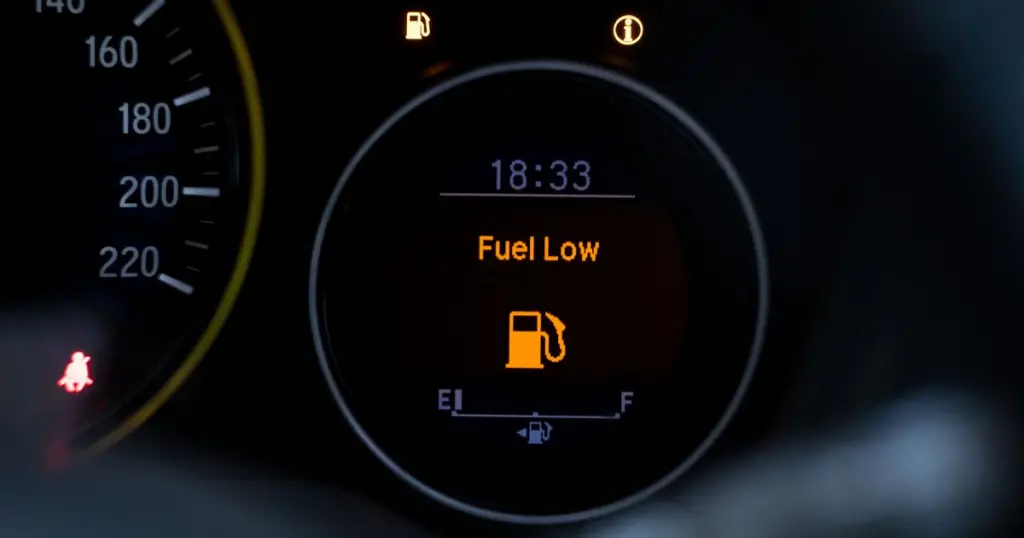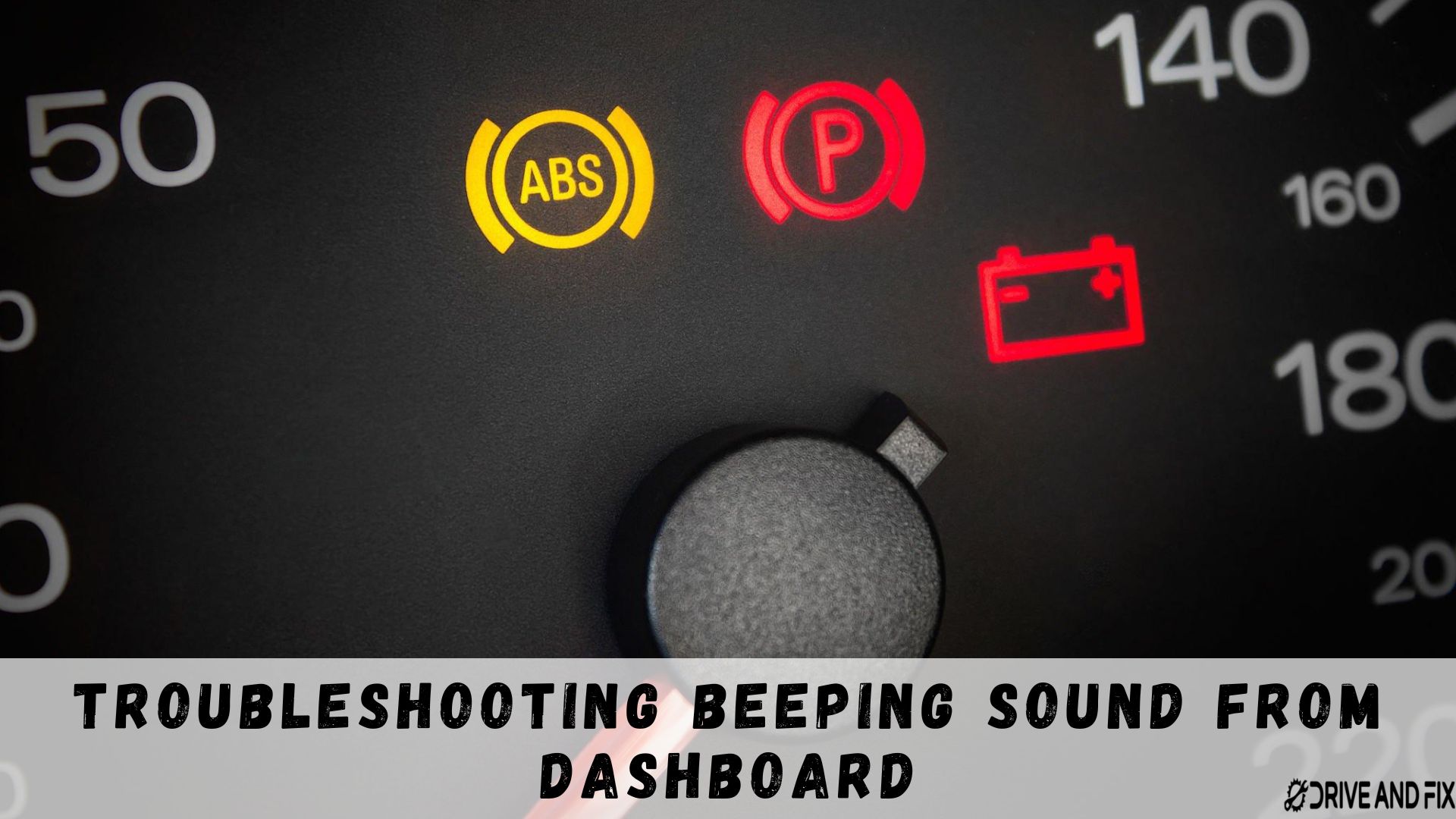Have you been driving your car and heard a beeping sound from the dashboard but had no idea what it meant? You are not alone. But what does it mean when your dashboard produces a beeping sound while driving? Is it a sign of some serious problem or just a minor glitch? How can you stop it or prevent it from happening again? These are some of the questions we will try to answer.
Allow us to take you through some reasons why your dashboard might be beeping and provide tips on what to do when you hear them. Whether you’re new or a seasoned pro, read on to learn the tips and tricks for troubleshooting beeping sound from dashboard to keep your car in top condition.
Possible Reasons For Beeping Sound From Dashboard

A beeping sound from your dashboard could indicate a problem with your vehicle. The specific sound and its meaning differ depending on the model of your car. To end the beeping sound, you need to identify and fix the cause of the problem. Here are some common reasons your dashboard might be beeping and the solutions.
Seat Belt Warning:

Most modern vehicles have a seatbelt warning system to alert drivers and passengers if their seatbelts are not correctly fastened. The warning sound is characterized by a chime or beep repeated until the seatbelt is buckled. The warning may also be accompanied by a visual display on the dashboard, such as an icon of a person wearing a seatbelt with a red “X” over it.
Importance of wearing a seatbelt
Wearing a seatbelt is among the most important things you can do to safeguard yourself while driving. In a collision, a seatbelt can prevent you from being thrown from the vehicle or hitting the windshield or dashboard. Buckling a seatbelt can reduce the risk of fatal injury by 45% for front-seat occupants and by 60% for passengers in pickup trucks.
Steps to take when to stop seatbelt warning beep:
First, ensure that all passengers in the vehicle are properly buckled up. If the warning persists even after everyone has fastened their seatbelts, ensure that no objects are pressing on the seat belt buckle that could prevent it from latching correctly. If the warning persists, it may indicate a malfunction in the seatbelt system that will require attention from a qualified mechanic.
Low Fuel Warning

The low fuel warning alerts you when the fuel level in the gas tank is running low. That is to avoid getting stuck on the road. A chime or beep, and a warning light or message on the dashboard usually indicate this warning. The warning may also be accompanied by an estimate of how many miles you can drive before running out of fuel.
Steps to Take When Low Fuel Warning Comes on
Refuel your vehicle as soon as possible, especially if you are driving in a new area or have a long distance to travel. If you’re not near a gas station or unable to refuel immediately, take steps to conserve fuel by driving at a steady speed and avoiding unnecessary acceleration or braking.
Tips to Avoid Running Low on Fuel:
Keep track of your fuel level and refuel regularly. Below are tips to help you stay on top of your fuel needs:
● Keep checking your gas gauge regularly, especially before embarking on a long drive.
● Plan your route ahead of time and identify gas stations along the way.
● Refuel when your gas tank is at least a quarter full to avoid running out of fuel unexpectedly.
● Avoid letting your fuel level get too low, as this can cause damage to your fuel system and reduce your car’s performance.
Battery Warning:

The battery warning is meant to notify you of a problem with the car’s battery or charging system. This warning is usually indicated by a light or message on the dashboard and may be accompanied by a chime or beep. The warning may show a range of issues, from a low battery charge to a malfunctioning alternator.
Importance of battery to car functioning:
The battery is vital to your car’s electrical system, providing power to the starter motor, ignition system, and other components. Without a functioning battery, your vehicle will not start or run properly. The battery also plays a vital role in the charging system, working with the alternator to keep the battery charged and maintain the proper voltage for the electrical system.
Steps to take when battery warning comes on:
Start by turning off any non-essential electrical components, like the radio or air conditioning, to reduce the strain on the battery. If possible, try to get to a safe location as soon as possible, as the battery may die at any moment.
Once you are safely stopped, take steps to diagnose the problem. Check the battery connections to ensure they are clean and secure, and look for any signs of corrosion or damage. If the problem continues, it may indicate a malfunctioning alternator or another issue with the charging system. In this case, it’s best to have your car serviced by a qualified mechanic as soon as possible to prevent further damage.
Door Ajar warning:

The door ajar warning lets you know when a door is not closed correctly or latched. This warning is usually indicated by a light or message on the dashboard and may be accompanied by a chime or beep. The warning is designed to prevent you from driving with an open door, which is dangerous and may cause damage to the car.
Importance of properly closing car doors:
It ensures your safety and the safety of your passengers by preventing anyone from falling out of the car while it’s in motion. It also prevents damage to the car, as open doors can easily be damaged by passing vehicles or other obstacles.
Steps to take when door ajar warning shows:
Immediately stop your car in a safe location to check all the doors to ensure they are correctly closed and latched. If you find a door open, close it firmly and make sure it shuts properly.
If you’ve checked all the doors and they are properly closed, but the warning persists, there may be a problem with the door sensor or the wiring. In this case, it’s best to have your car serviced by a qualified mechanic as soon as possible to prevent further issues.
Brake Warning

The brake warning feature tells the driver of a problem with the brake system. This warning usually displays as a light or message on the dashboard and can be followed by some chime or beep. The warning could indicate various issues, from low brake fluid to a malfunctioning brake system.
Importance of checking parking brake:
Checking the parking brake is essential to maintaining your car’s braking system. The parking brake is designed to keep your vehicle from rolling when it’s parked and helps distribute wear and tear evenly across the brake system. Regularly checking and using your parking brake can help prevent issues with your braking system.
Steps to take when a brake warning shows up:
First, check your parking brake to ensure it’s properly engaged. Check your brake fluid level if the warning persists after disengaging the parking brake. Low brake fluid levels can indicate a system leak or other issues requiring attention.
If your brake fluid levels are normal, but the warning persists, it may indicate a more serious issue with your brake system. In this case, it’s best to have your car serviced by a qualified mechanic.
Low coolant level warning
This feature lets you know when the engine coolant level is low. The beeping sound is triggered by a sensor that detects the level of coolant in the engine. When the level falls below a certain point, the sensor signals the car’s computer, activating the warning light and sound.
Why it’s important to keep a maximum coolant level
The beeping sound draws the driver’s attention to the issue, as a low coolant level can cause severe problems for your car’s engine. When the coolant level is low, there may not be enough to adequately cool the machine, which causes it to overheat and potentially cause damage. Low coolant levels can lead to other issues, such as corrosion, rust, and premature wear on engine components.
It’s important to take the low coolant warning seriously and address the issue as soon as possible. If the warning is ignored, it can seriously damage your car’s engine and potentially leave you stranded on the road. To address the issue, check the coolant level and top it up if necessary. If the coolant level is consistently low, it may indicate a leak in the system or other underlying issues, which a qualified mechanic should address.
Blend Actuator

A blend actuator is a car’s (HVAC) system component. Its primary function is to control the flow of hot and cold air through the HVAC system to maintain the desired temperature inside the car. A lousy blend actuator may trigger a warning light or message on the dashboard, but this is not always true. Often, a malfunctioning blend actuator will not trigger a specific warning light or message on the dashboard. Instead, it will cause problems with the heating, ventilation, and air conditioning (HVAC) system. If damaged or uncalibrated, it may cause a clicking noise in the dashboard, especially when you change the temperature or turn on the AC2.
Importance of Checking Blend Actuator
When a blend actuator is bad, it can cause several problems with the HVAC system. The most common symptom is a failure to regulate the temperature inside the car properly. This may result in the air blowing out of the vents being too hot or too cold, even when the temperature controls are set correctly. In some cases, the airflow may also be weaker than usual.
The cause of a bad blend actuator can vary, but it’s often due to wear and tear over time. The blend actuator may also fail due to a fault in the electrical circuit or a malfunction in the control module.
If you suspect your car’s blend actuator is bad, having it checked and repaired as soon as possible is important. A malfunctioning HVAC system can make driving uncomfortable and affect your ability to see through the windshield in extreme weather conditions.
To diagnose a lousy blend actuator, a mechanic will perform several tests to know the source of the problem. Once the issue is identified, the blend actuator can be replaced or repaired.
NOTE:
You can check the owner’s manual for more information on troubleshooting and resolving the issue. If you are unsure what the beeping sound means or if it persists even after taking corrective measures, it is best to consult your vehicle manual or take it to a professional mechanic for diagnosis and repair.
Final Thoughts
Don’t panic or get angry the next time you hear a beeping sound from your dashboard. Remember that it is a message from your machine trying to help you. Therefore, you should not ignore or try to mute them without finding the cause. Instead, use the tools and tips we have discussed to diagnose and fix the problem as soon as possible. Use the knowledge and skills to decode the message and take action accordingly. You will be glad you did. Happy troubleshooting!
You May Also Like:
The Essential Guide to Blown AC Fuse In Car Symptoms
Will Wheel Weights Stick To Ceramic Coating?
Why Car AC Stops Blowing Cold Air After A While -Troubleshooting Tips
Blown Fuse Car Won’t Start? Here’s What You Need to Know


